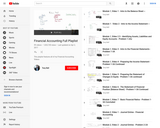
Comprehensive series of videos for introductory financial accounting courses featuring sample problems and solutions
- Subject:
- Accounting
- Business and Communication
- Material Type:
- Lecture
- Author:
- Tony Bell
- Date Added:
- 04/04/2019

Comprehensive series of videos for introductory financial accounting courses featuring sample problems and solutions

This is an advanced professional course intended for individuals working in banks, investment companies, stock brokers or large corporate finance departments. There are three distinct parts: the first four chapters review approaches to valuation of financial assets; the next nine chapters cover one aspect of the firm operations and draw conclusions on the implications for the value of the firm to investors; the last two chapters incorporate economic forecasting to an assessment of firm's strategy. There is a general theme repeated through all the chapters that there are many different purposes of analysis of a company's financial condition and the focus changes accordingly, but the methods remain essentially the same. All well known analytical methods are presented with examples showing their use, and with, just as importantly, a discussion of their limitations.
After completing this course a student should
- be able to take certification exams to become a financial analyst
- understand the context in which financial analysis is conducted
- be familiar with all the commonly used techniques of financial analysis
- know the importance of external economic and industry factor, and how to incorporate them in the analysis
- be able to make recommendations on decisions to buy or sell shares
- adequately manage with the shortcomings of accounting numbers
- appreciate the usefulness and limitations of statistical inference techniques
- know how to analyze all major investment and financial decisions
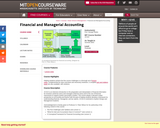
An intensive introduction to the preparation and interpretation of financial information for investors (external users) and managers (internal users) and to the use of financial instruments to support system and project creation. Adopts a decision-maker perspective on accounting and finance. This is an intensive introduction to the preparation and interpretation of financial information for investors (external users) and managers (internal users) and to the use of financial instruments to support system and project creation. The course adopts a decision-maker perspective on accounting and finance with the goal of helping students develop a framework for understanding financial, managerial, and tax reports.
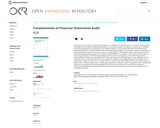
The purpose of an audit is to enhance the degree of confidence of intended users in the financial statements. The objective of an audit of financial statements is to enable an auditor to express an opinion as to whether the financial statements are prepared, in all material respects, in accordance with International Financial Reporting Standards or another identified financial reporting framework. The auditor's opinion is expressed in by using the phrase 'give a true and fair view' or 'present fairly, in all material respects'. The auditor and the client's management have separate and distinct responsibilities. The auditor is responsible for forming and expressing an opinion on the financial statements. The client's management, on the other hand, bears responsibility for preparing and presenting the financial statements. Management's responsibilities are not relieved by the fact that the statements are audited. An auditor must comply with the general principles of an audit. These require an auditor to 1) comply with the 'Code of Ethics for Professional Accountants' issued by the IFAC (or a national Code of Ethics, where appropriate); 2) conduct an audit in accordance with International Standards on Auditing (ISAs) (where applicable), and 3) plan and perform the audit with an attitude of professional skepticism, recognizing that circumstances may exist that cause the financial statements to be materially misstated.

This text is intended for a first course in Intermediate Financial Accounting. It presumes that students have already completed one or two Introductory Financial Accounting courses. The book reflects current International Financial Reporting Standards (IFRS), such as IFRS 15 - Revenue from Contracts With Customers. It focuses on more difficult intermediate accounting topics that match prerequisite requirements for students advancing to a second level Intermediate Financial Accounting course. Advanced topics that are covered in Advanced Financial Accounting courses, such as consolidations and foreign exchange, are not included here. The text is written with an approachable style that focuses on key concepts that will be relevant to students' future careers as accountants.
The book provides a review of Introductory Accounting concepts and covers all topics essential to a first level Intermediate Accounting course: the conceptual framework and current landscape of financial reporting; statements of financial position, comprehensive income, cash flows and shareholders' equity; cash and receivables; revenue; inventory; property plant and equipment; intangible assets; and intercorporate investments.
Lyryx develops and supports open texts, with editorial services to adapt the text for each particular course. In addition, Lyryx provides content-specific formative online assessment, a wide variety of supplements, and in-house support available 7 days/week for both students and instructors.

This text is intended for a first course in Intermediate Financial Accounting. It presumes that students have already completed one or two Introductory Financial Accounting courses. The book reflects current International Financial Reporting Standards (IFRS), such as IFRS 15 - Revenue from Contracts With Customers. It focuses on more difficult intermediate accounting topics that match prerequisite requirements for students advancing to a second level Intermediate Financial Accounting course. Advanced topics that are covered in Advanced Financial Accounting courses, such as consolidations and foreign exchange, are not included here. The text is written with an approachable style that focuses on key concepts that will be relevant to students' future careers as accountants.
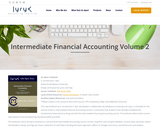
This new text by G. Arnold and S. Kyle, developed in collaboration by Athabasca University and Lyryx, is intended the second of two in Intermediate Financial Accounting courses. It presumes that students have already completed the Introductory Financial Accounting, and the first Intermediate Financing Accounting course. The text reflects both current International Financial Reporting Standards (IFRS) and ASPE.
This text covers all topics essential to a second level Intermediate Accounting course: current, long-term and complex liabilities, income taxes, pensions, leases, shareholders' equity, earnings per share, statement of cash flows including the direct approach, effects of changes and errors, and disclosures and analysis.
Topics that are covered in Advanced Financial Accounting courses, such as consolidations and foreign exchange, are not included here.
Lyryx develops and supports open texts, with editorial services to adapt the text for each particular course. In addition, Lyryx provides content-specific formative online assessment, a wide variety of supplements, and in-house support available 7 days/week for both students and instructors.

This new text by G. Arnold and S. Kyle, developed in collaboration by Athabasca University and Lyryx, is intended for the second of two in Intermediate Financial Accounting courses. It presumes that students have already completed the Introductory Financial Accounting, and the first Intermediate Financing Accounting course. The text reflects both current International Financial Reporting Standards (IFRS) and ASPE.
This text covers all topics essential to a second level Intermediate Accounting course: current, long-term and complex liabilities, income taxes, pensions, leases, shareholders' equity, earnings per share, statement of cash flows including the direct approach, effects of changes and errors, and disclosures and analysis.
Topics that are covered in Advanced Financial Accounting courses, such as consolidations and foreign exchange, are not included here.
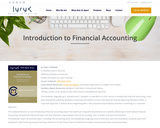
This text, originally by D. Annand and H. Dauderis, is intended for a first course in introductory financial accounting. It has been extensively edited by Athabasca University and reflects current International Financial Reporting Standards (IFRS). A corporate approach is utilized versus beginning with a sole proprietorship emphasis and then converting to a corporate approach.
The text focuses on core introductory financial accounting topics that match pre-requisite requirements for students advancing to Intermediate Financial Accounting. Excluded are advanced topics that are covered in Intermediate Financial Accounting, such as leases and bond amortization.
The text covers all essential topics, including: the accounting cycle; merchandising; assigning costs to inventory; cash and receivables; property, plant and equipment; debt financing; equity financing; statement of cash flows; financial statement analysis; and proprietorships and partnerships.
Lyryx develops and supports open texts, with editorial services to adapt the text for each particular course. In addition, Lyryx provides content-specific formative online assessment, a wide variety of supplements, and in-house support available 7 days/week for both students and instructors.
Reviews of this title available here: https://open.umn.edu/opentextbooks/textbooks/introduction-to-financial-accounting-u-s-gaap-adaptation

This text, originally by D. Annand and H. Dauderis, is intended for a first course in introductory financial accounting. It has been extensively edited by Athabasca University and reflects current International Financial Reporting Standards (IFRS). A corporate approach is utilized versus beginning with a sole proprietorship emphasis and then converting to a corporate approach.
The text focuses on core introductory financial accounting topics that match pre-requisite requirements for students advancing to Intermediate Financial Accounting. Excluded are advanced topics that are covered in Intermediate Financial Accounting, such as leases and bond amortization.
The text covers all essential topics, including: the accounting cycle; merchandising; assigning costs to inventory; cash and receivables; property, plant and equipment; debt financing; equity financing; statement of cash flows; financial statement analysis; and proprietorships and partnerships.
Lyryx develops and supports open texts, with editorial services to adapt the text for each particular course. In addition, Lyryx provides content-specific formative online assessment, a wide variety of supplements, and in-house support available 7 days/week for both students and instructors.
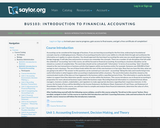
Accounting can be considered the language of business. If you are learning accounting for the first time, embracing its foundational concepts may be a challenging process. Mastery of accounting primarily rests in your ability to critically think through and synthesize the information as it applies to a given situation. You should approach the learning of accounting the same way you would approach learning a foreign language; It will take time and practice to ensure you remember the concepts. There are a number of sub-disciplines that fall under the umbrella of "accounting,” but in this course, we will be focused on financial accounting.

Based on United States generally accepted accounting principles, this textbook was written by David Annand, EdD, MBA, CPA, CA, and Professor of Accounting in the Faculty of Business at Athabasca University. It was adapted by Teresa Thompson of Mission College, Santa Clara CA.
Text chapters are as follows:
1. Introduction to Financial Accounting
2. The Accounting Process
3. Financial Accounting and the Use of Adjusting Entries
4. The Classified Balance Sheet and Related Disclosures
5. Accounting for the Sale of Goods
6. Assigning Costs to Merchandise
7. Cash and Receivables
8. Long-lived Assets
9. Debt Financing: Current and Non-current Liabilities
10. Debt Financing: Bonds
11. Equity Financing
12. Proprietorships and Partnerships
13. Financial Statement Analysis
14. The Statement of Cash Flows
The material also includes multiple ancillary student resources: a solutions manual for all text questions, a full index, and a student workbook. Students can print outlines for answers to any questions as they need them and fill in responses manually. All of this material is able to be printed on demand in whole or in part.
The text and solutions manual are also available as a combined .pdf file for onscreen viewing. The material is fully bookmarked. All questions and problems are hyper-linked to related solutions. In addition there are links to randomly-generated Excel® problems at the end of each chapter. These cover key concepts, and provide unlimited practice and feedback.
Instructor resources include an assignment and exam bank, and PowerPoint® slides. All text, solutions manual, and student workbook material is available in .docx format for instructors to customize if desired. The material is freely-adaptable and shareable under a CC-BY-SA-NC licence.
A comprehensive, end-of-term case is also available (Jensen Wholesalers Corp.). This requires students to prepare 18 different year-end adjusting entries and all four types of financial statements, and calculation and analysis of 16 different financial statement ratios. Tailored solutions are provided for instructors. An example is included on this webpage. Unique versions can be created for any number of individual students or groups.
This case, and the assignment and exam bank are available upon request to davida@athabascau.ca.

This textbook, originally by D. Annand and H. Dauderis, was intended for a first course in introductory financial accounting. It was extensively edited by Athabasca University to reflect current International Financial Reporting Standards (IFRS). This most recent revision by D. Marchand converted the text from IFRS to reflect the Generally Accepted Accounting Principles of the United States (U.S. GAAP). A corporate approach is utilized versus beginning with a sole proprietorship emphasis and then converting to a corporate approach.
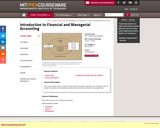
Studies basic concepts of financial and managerial reporting. Viewpoint is that of readers of financial and managerial reports rather than the accountants who prepare them.
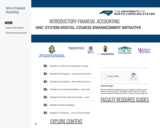
The Introductory Financial Accounting digital course enhancements is a comprehensive, open access resource for accounting instructors to adopt in whole or in part and is designed to support flexibility for faculty and students.
The main textbook is OpenStax’s Principles of Accounting: Volume 1: Financial Accounting
Learning Outcomes for the Course: Each module can be linked to the following student-learning outcomes. Within each module, the module outcomes indicate linkage to these overall course outcomes.
Course Outcome 1 (CO 1) - Recognize basic accounting terminology.
Course Outcomes 2 (CO 2) - Apply the accounting cycle steps and procedures within the accounting system.
Course Outcome 3 (CO 3) - Create and analyze the financial statements prepared in accordance with generally accepted accounting principles (GAAP).
Course Outcome 4 (CO 4) - Discuss the challenges, limitations and ethics of financial accounting.
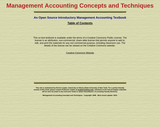
An Open Source Introductory Management Accounting Textbook
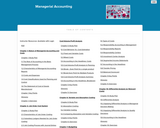
This course looks at the role of accounting in the management process, cost systems, capital investment, and more.
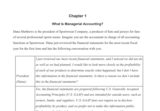
Kurt Heisinger and Joe Ben Hoyle believe that students want to learn accounting in the most efficient way possible, balancing coursework with personal schedules. They tend to focus on their studies in short intense segments between jobs, classes, and family commitments. Meanwhile, the accounting industry has endured dramatic shifts since the collapse of Enron and WorldCom, causing a renewed focus on ethical behavior in accounting. This dynamic author team designed Managerial Accounting to work within the confines of today’s students’ lives while delivering a modern look at managerial accounting.
Managerial Accounting was written around three major themes: Ready, Reinforcement and Relevance. This book is aimed squarely at the new learning styles evident with today’s students and addresses accounting industry changes as well.
Table of Contents
Chapter 1: What Is Managerial Accounting?
Chapter 2: How Is Job Costing Used to Track Production Costs?
Chapter 3: How Does an Organization Use Activity-Based Costing to Allocate Overhead Costs?
Chapter 4: How Is Process Costing Used to Track Production Costs?
Chapter 5: How Do Organizations Identify Cost Behavior Patterns?
Chapter 6: How Is Cost-Volume-Profit Analysis Used for Decision Making?
Chapter 7: How Are Relevant Revenues and Costs Used to Make Decisions?
Chapter 8: How Is Capital Budgeting Used to Make Decisions?
Chapter 9: How Are Operating Budgets Created?
Chapter 10: How Do Managers Evaluate Performance Using Cost Variance Analysis?
Chapter 11: How Do Managers Evaluate Performance in Decentralized Organizations?
Chapter 12: How Is the Statement of Cash Flows Prepared and Used?
Chapter 13: How Do Managers Use Financial and Nonfinancial Performance Measures?

Kurt Heisinger and Joe Ben Hoyle believe that students want to learn accounting in the most efficient way possible, balancing coursework with personal schedules. They tend to focus on their studies in short intense segments between jobs, classes, and family commitments. Meanwhile, the accounting industry has endured dramatic shifts since the collapse of Enron and WorldCom, causing a renewed focus on ethical behavior in accounting. This dynamic author team designed Managerial Accounting to work within the confines of today's students' lives while delivering a modern look at managerial accounting.

Managerial Accounting was written around three major themes: Ready, Reinforcement and Relevance. This book is aimed squarely at the new learning styles evident with today's students and addresses accounting industry changes as well.